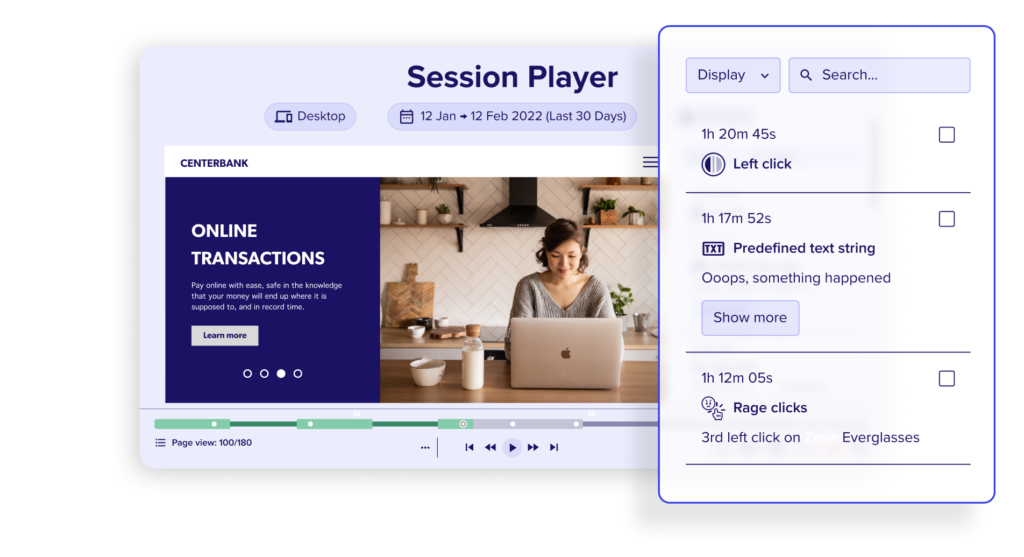Comprehensive understanding of website monitoring
Website monitoring is a critical component in today’s digital landscape, ensuring optimal website performance, availability, and functionality. This process involves continuous uptime tracking and server monitoring to ensure the website is always available and functioning as expected. Website monitoring tools are employed to automate this process, conducting regular checks on the website and alerting the administrators in case of any issues, such as site downtime or slow load times. Not only does website monitoring identify problems, but it also collects valuable web analytics data. This data can provide insights into website performance over time, identify trends, and highlight areas for website optimization. It can also help in understanding website traffic patterns, such as which pages are most visited, how long visitors stay on the site, and what actions they take. Website monitoring is not just about uptime tracking and server monitoring. It also involves assessing website performance, such as the site’s speed and responsiveness. Moreover, it includes transaction monitoring to verify the correct functioning of site processes like login, signup, and checkout.
What is website monitoring?
Website monitoring is the process of testing and verifying that end-users can interact with a website or web application as expected. It involves consistent website availability checks, functionality tests, and performance measurement to ensure maximum uptime and optimal user experience. Website monitoring is typically performed using specialized web hosting tools that simulate user behavior, check server health, and track website performance metrics. The scope of website monitoring extends beyond simple uptime tracking. It also includes performance monitoring, which measures how quickly a website loads and responds to user interactions. Transaction monitoring is another crucial aspect, checking the functionality of critical processes such as online forms, shopping carts, and user logins. Website monitoring also involves security checks to identify potential threats and vulnerabilities. These checks can detect issues such as malware, hacking attempts, and SSL certificate errors. By identifying these issues promptly, website administrators can take immediate action to protect the website and its users.
Monitoring website with Session Replay: discover how visitors experience your site or app by capturing every click, hover, frustration, and intent-driven behavior. >> Session Replay
Importance of website monitoring
Website monitoring plays a vital role in maintaining a website’s overall health and performance. It ensures that the website is always accessible to users and functions as intended, providing a seamless user experience. A well-monitored website can significantly improve user satisfaction, leading to increased user engagement, higher conversion rates, and improved SEO (Search Engine Optimization) rankings. Website monitoring also helps in proactive problem resolution. By identifying issues in real-time, it allows website administrators to fix them before they affect the end-users. This proactive approach can prevent potential loss of revenue and damage to the website’s reputation caused by prolonged site downtime or poor performance. Moreover, the data collected through website monitoring can provide valuable insights for website optimization. It can help identify performance bottlenecks, assess the impact of changes, and guide future development efforts. By leveraging this data, businesses can make informed decisions to enhance their website’s performance, functionality, and user experience.
How does website monitoring work?
Website monitoring, a critical component of SEO (Search Engine Optimization), is a complex process that involves uptime tracking, server monitoring, and website performance analysis. The primary objective of this process is to ensure website availability and optimal functionality. Automated software tools are employed in this process, regularly scrutinizing various aspects of a website, including uptime tracking, load time, and response time. The ultimate goal is to maintain website availability and deliver an unbroken user experience. Server monitoring plays a crucial role in website monitoring. Automated tools send requests to the server, and the server’s response to these requests is analyzed. A prompt response indicates a healthy server and contributes to website availability. However, a delay or lack of response signifies server issues, potentially leading to site downtime. In such instances, the monitoring tool alerts the website administrator, enabling swift resolution before user experience is impacted. Website performance is another vital aspect of website monitoring. Performance monitoring tools measure the load time of a webpage, the display time of images, and the execution time of scripts. These metrics are key indicators of website performance and are closely monitored. If any of these metrics exceed set thresholds, the monitoring tool triggers an alert, signaling a performance issue requiring attention. This process of website optimization ensures that website performance is maintained at optimal levels. Website monitoring also encompasses transaction monitoring. This involves tracking user interactions with a website, such as link clicks, form submissions, and purchases. Transaction monitoring is particularly crucial for e-commerce websites, where a smooth, error-free checkout process is essential. Any issues encountered by a user during a transaction are detected by the monitoring tool and reported to the website administrator. This process, coupled with web analytics, provides insights into website traffic patterns and user behavior, contributing to website optimization and enhancing SEO efforts. In essence, website monitoring is a multi-faceted process that involves server monitoring, uptime tracking, website performance monitoring, and transaction monitoring. By leveraging automated software tools and web analytics, website administrators can ensure website availability, optimize website performance, prevent site downtime, and provide a seamless user experience. This process, integral to web hosting services, is a key factor in driving website traffic and enhancing SEO (Search Engine Optimization) efforts.
Monitoring website with Session Replay: discover how visitors experience your site or app by capturing every click, hover, frustration, and intent-driven behavior. >> Session Replay


